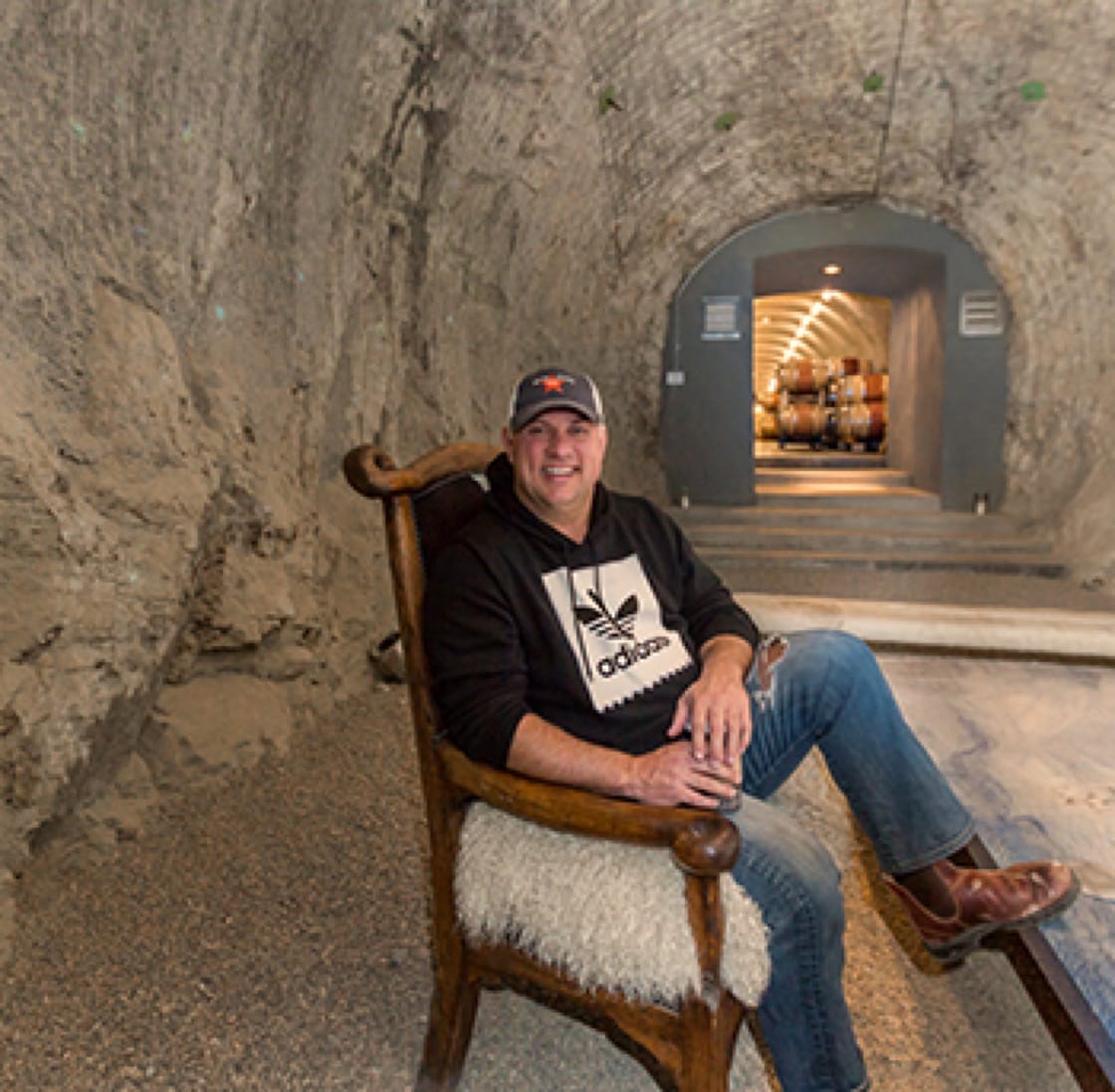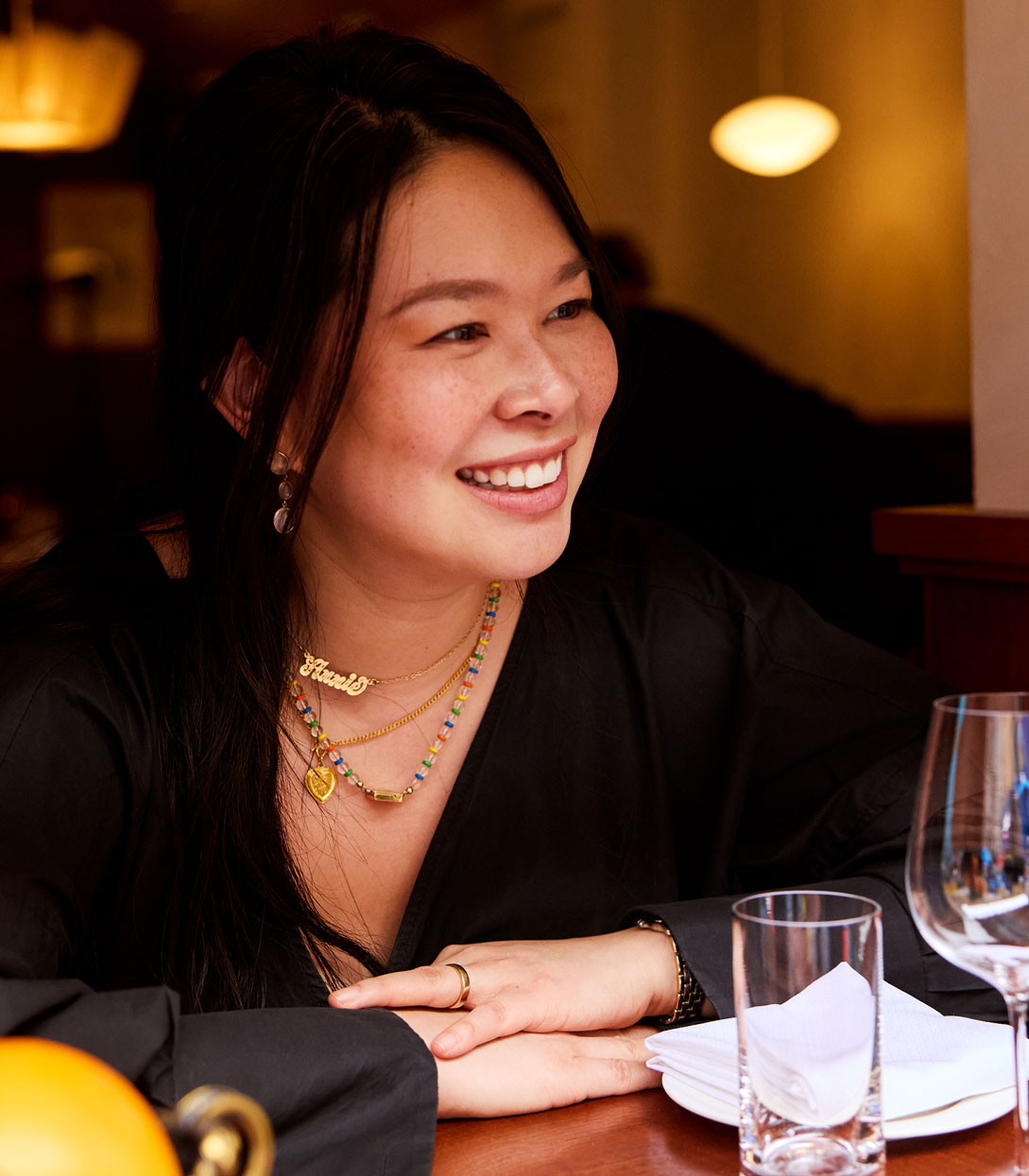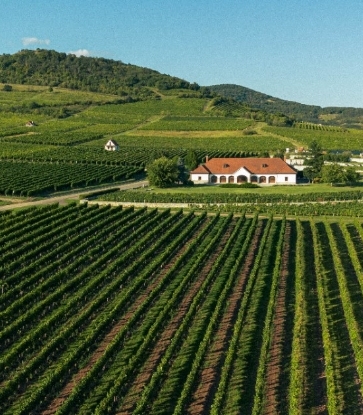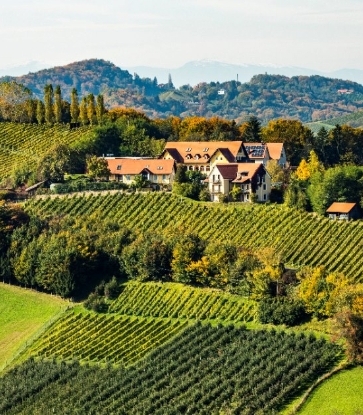Anthony Biagi is a tour de force in the Northern California wine world. A sixth-generation Californian, he spent 10 years working at Cade and Plumpjack. Currently, he’s the winemaker for Hourglass in St. Helena and Amici in Calistoga; he consults for projects in Napa, Sonoma and Paso Robles including Clos Du Val, Lasseter, Jada and My Favorite Neighbor, a new Cabernet Sauvignon project with Eric Jensen of Booker Wines. In 2013 he started his own brand, Patria.

“There was always wine around the house growing up,” Anthony tells me when I arrive at Hourglass. It’s bottling day and there is a buzz of activity: the rhythmic sound of the bottling line and its clanking bottles, the beeping of a forklift which zips forward and backward through the narrow cellar passages between rows of barrels, loaded with newly packed cases of wine.
“My dad and my stepfather both made wine back in the 1970s,” Anthony says.
“I was recruited to wrestle at Davis. I wanted to be a marine biologist and I knew I could never sit behind a desk. I took a class on winemaking with Anne Noble and loved it. So I did an internship at Hess and the rest is history. The wine business is Pandora’s box—I never pulled a check from any other business once I graduated.”
We sat down to speak about the challenges of the wine business, how the Napa Valley has changed and Anthony’s vision for its future.
What is it like to work on so many different projects?
It’s about having a great team. Whether I’m the winemaker or a consultant, I have a great team at every place I work. Each project brings its own set of circumstances and its own set of positives and negatives. But at the end of the day it’s not about me. It’s about making a winery better—that’s what you’re being paid to do.

You started your own label, Patria, in 2013. What were some of the challenges of creating and building your own brand?
The challenge is distribution. I believe in the three-tier system, but you have to maintain your cost of goods and keep a profit. You need your wine to get into the hands of the right distributors, and that can be hard. How do you stand apart in this sea of wonderful wine? Eventually you find your own tribe—people who identify with your winemaking and your style.
Does your winemaking philosophy change from project to project?
I have projects in many places from Sonoma to Paso Robles. What doesn’t change is that you always work with great vineyards. It makes it a lot easier to craft great wine. If everything is done by the time the wine is in barrel, you become a steward to just get it into the bottle.
Have you seen the styles of wine in the Napa Valley change over the years?
Nowadays it’s not about over-ripeness; instead we are looking for phenolic ripeness. We all rode that pendulum. Most of us chased ripeness levels but now we are trying to do something different. I spend most of my time trying to get tannins ripe because sugar can outpace phenolic maturity. In the old days we had different viticultural methods and rootstocks like St. George—we struggled to get ripeness. Now it’s like having too much rocket fuel and we’re going back to clonal selections and heritage clones that don’t get as ripe as quickly and can allow for phenolic maturity.
A great wine tastes of a sense of place—it has to reverberate where it’s from. You achieve that by picking at optimal, not over, ripeness. You lose a sense of place that way. You have to be in the vineyards and understand what constitutes ripeness in that particular vineyard. What is the vineyard giving you? What drives a wine? It’s our job as winemakers to find out.

How has the Napa Valley changed since you first started in the business?
I moved to Napa in 1993, when I was attending UC Davis. I got to be part of the explosion of the California wine scene. I was able to taste all these great local and European wines: Dalla Valle, Colgin, great red Burgundies like Méo Camuzet and Leroy, before demand for them became what it is today. And viticulture has changed. Back then, we could buy fruit from Vine Hill Ranch, Scarecrow, Screaming Eagle—you could buy all this great fruit. Now they’ve all become winemakers and you see all these estate-driven concepts. When something’s great, people flock to it.
What will Napa Valley look like in the next few decades?
It’s always going to be beautiful and majestic, that won’t change. But the prices I see on wine lists these days are scary. Napa Valley is so special. Not to not be able to get the average consumer a bottle of Napa Valley wine when they go out to dinner, that can cause a backlash. Yes, we make a small amount of wine in the global scheme of things, but in the past people could still afford it. Now they can’t. There will always be luxury goods and cheaper brands, but where does the pricing go? Twenty years ago, when I started in this business, it was more competitive than it is today. We don’t have inexpensive wines anymore to compete with imported wines. Will people in the rest of the country continue to buy Napa wine?
What advice would you give to someone who wants to start their own wine label?
Anyone who gets a winemaking degree will eventually want to make their own wine. But you have to understand the financial aspects before you do. Anyone will sell you grapes, bottles, corks, etc., but if you don’t understand your cost of goods and how the financial side works, you won’t succeed. A business has to pay for itself—it’s a very unsexy side of winemaking. Cabernet Sauvignon is in barrel for two years before you can even sell it. And if you’re buying fruit like To Kalon, you’re spending hundreds of thousands of dollars, plus the cost of barrels. I’ve watched a lot of people fail because they couldn’t make a margin. Dan Duckhorn, who was a genius at business and had an uncanny ability to run a business well, taught me to understand that—you can be artistic but how is the business going to work?
What are some of the challenges Napa Valley faces right now?
There are some young people here that are so passionate about the industry. But I worry about losing these people because the prices are so high, salaries haven’t kept up and there’s nowhere to live. I fear we will have a brain drain of really talented people to Oregon, Temecula, Paso Robles, Washington—places where they can make a living, buy a house and start a family. Part of living in Napa Valley should be working here—no one wants to commute to Fairfield because they can’t afford to live here.
One good thing about being in this business is that people ask the questions: What can we do better? How can we farm better? People care more than ever about the environment, water use, housing issues, employment and labor issues—people are asking those questions. And I think we will start finding answers to these issues because we have a good set of minds here.
Portrait of Tony Biagi courtesy of Hourglass.




















